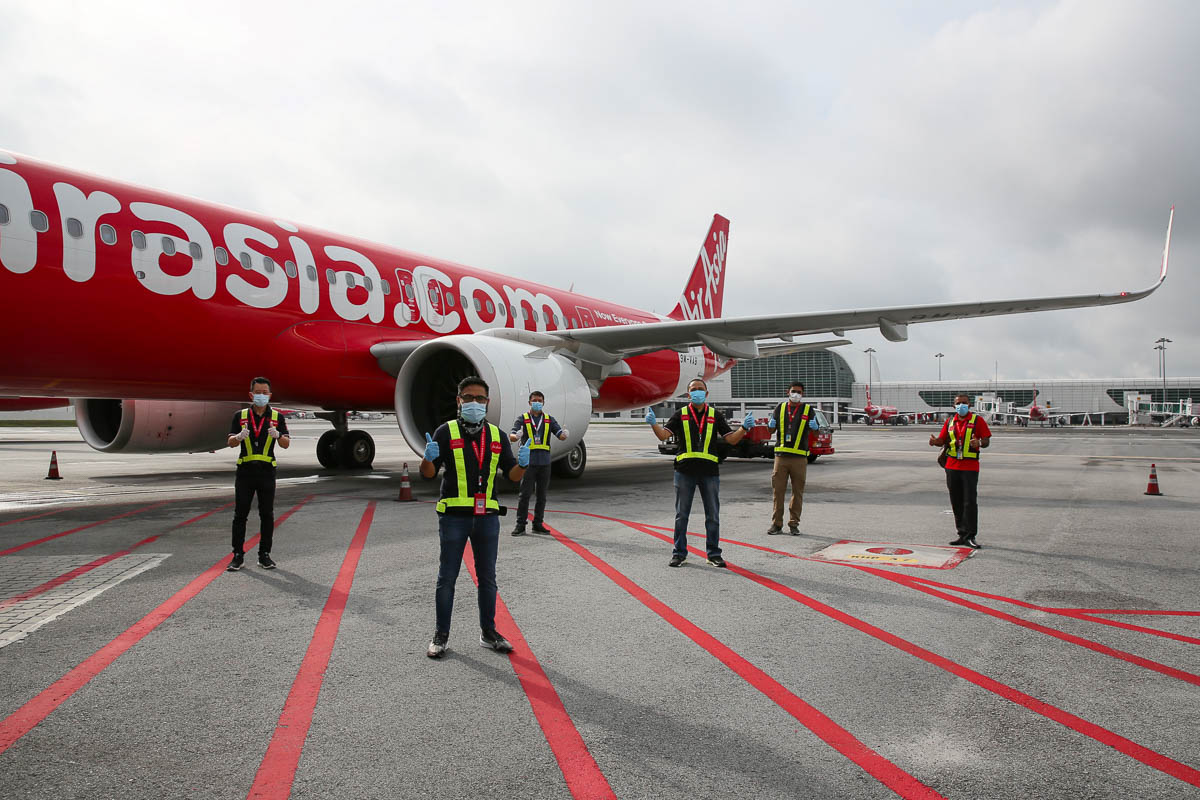It’s World Environment Day celebration this Sunday, 5th June 2022, and many airlines are sharing what they’re doing to contribute. For techies and environmentalists alike, this is encouraging news. For some, it’s the introduction of sustainable aviation fuel. Over at AirAsia, they’ve announced their new Flight Operations optimisation solution, building on existing operations. The first will be the installation an innovative aircraft software modification – a Descent Profile Optimiser (DPO) on its A320ceo aircraft commencing in June. This upgrade will help to generate fuel savings and significantly reduce carbon dioxide (CO₂) emissions.
Flight Operations optimisation
The overall aim of the Flight Operations optimisation solution of reducing emission per aircraft by 221 tonnes of CO₂ will be achieved through a variety of measures in conjunction with use of the DPO. The older A320ceo aircraft will eventually be replaced by the newer and more fuel efficient A320neo. However, it makes sense to optimise operations with the existing aircraft, to the benefit of both customers and the company.
The enhancement to the aircraft’s onboard Flight Management System (FMS) performance database allows the aircraft to optimise the descent phase of the flight. This subsequently minimises the amount of time spent at an inefficient level off. Local residents will also appreciate this change.
The new initiative is set to reduce fuel consumption and improve the fuel efficiency by up to 0.75% of fuel burn, equivalent to saving 101 kgs of CO₂ emissions per flight. This could reduce CO₂ emissions by over 221 tonnes per aircraft per year, representing a considerable contribution to more sustainable Flight Operations.
Once installed, initially on 17 aircraft, this should save 3,764 tonnes of CO₂ per year, the equivalent of 62,700 urban trees planted based on the US EPA’s Greenhouse Gas Equivalencies Calculator.
…. As the travel industry begins to recover and we expect to get back to pre-pandemic levels by the end of this year, it is important that we review our climate strategy and put in place new mechanisms and processes that will help to minimise the environmental impact of our flight operations. Bo Lingam, Group CEO of AirAsia Aviation Group Limited (AAAGL)
He added that the installation of the new flight operations optimisation solution current A320ceo aircraft allows AirAsia to reduce their carbon footprint for the short and medium-term as they continue to gradually upgrade the fleet to the higher capacity and more fuel-efficient A321neo in the longer term. Additionally, he acknowledged the reality of climate change and the airline industry’s contribution to emissions, makes the reduction of their carbon footprint a top sustainability priorities. This is in line with a commitment to ensuring a sustainable airline that aligns with the aviation industry’s sustainability goal to reach net-zero by 2050.
Additional solutions
In addition to the DPO, AirAsia has implemented several other key efficiency initiatives to reduce fuel consumption and carbon emissions.
These include:
- One Engine Taxi
- operating one engine during the taxi phase of flight instead of both engines
- Idle Reverse Landing
- uses idle engine thrust upon landing instead of powered thrust
- this reduces noise and fuel burn
- Required Navigation Performance-Authorisation Required (RNP-AR) approach
- uses the aircraft’s advanced navigation capabilities instead of conventional ground-based equipment for the shortest landing approach
During 2021, AirAsia says these measures avoided the emission of 11,175 tonnes of carbon dioxide, equivalent to planting 186,250 urban trees.







This Post Has 0 Comments